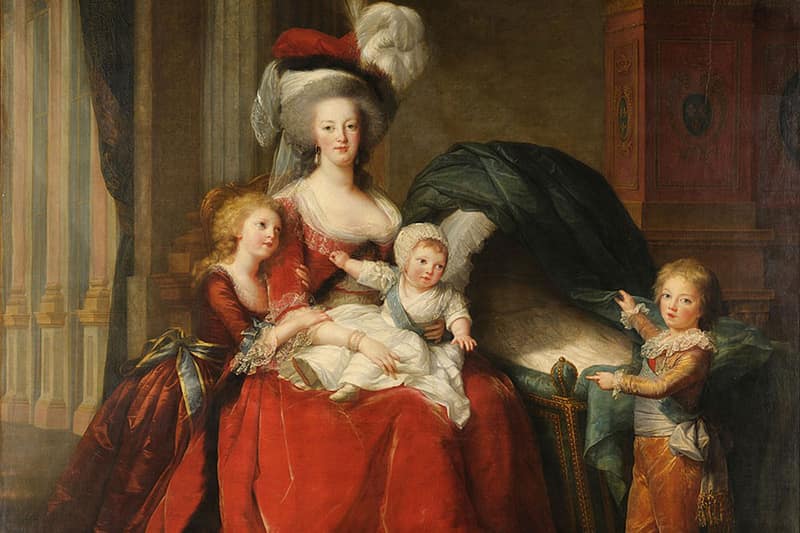If you love warm, buttery pastries, then chances are you’re partial to a croissant or two. But, how much do you really know about the humble croissant?
Well, you might be surprised to hear that the croissant’s ancestor didn’t originate in France! Read on to find out everything you need to know about croissants and for some fun ways to celebrate National Croissant Day.
What is a croissant?
What defines a croissant is its buttery, puff pastry finish. An excellent croissant is extremely light, with very flaky pastry on the outside and soft and doughy on the inside. A good croissant has a soft, slightly sweet, buttery flavour. Croissants are made using a special technique that relies on leavened yeast dough, that is layered with butter and baked in the oven.
You may not realise, but there is a subtle difference between a curved croissant and a straight croissant, and it all comes down to one key ingredient. So, make sure you get it right on croissant day! The curved croissant is known as the croissant ordinaire and is made with margarine, but croissants made with butter are straight and are far superior in France for their taste.
Who invented the croissant?
The croissant is thought to have been invented by an Austrian, known as August Zang. After a career in the artillery, Zang founded a bakery in Paris and made a brioche-version of the croissant popular. Patisseries in Paris developed the original Austrian recipe to make croissants flakier and lighter in the nineteenth century. National Croissant Day came about much later!
What is the history of the croissant?
You may know Marie Antoinette has been famously linked to cake, but she was also behind the introduction of the croissant to France! Marie, who was born a princess of Austria in 1755, was the daughter of Maria Theresa and the Holy Roman Emperor, Francis I. Married at the age of 15 to the French King, Louis XVI, she arrived in France feeling homesick and lonely.
As Marie Antoinette missed home comforts from Austria, she asked the kitchen staff at the Palace of Versailles to make pastries from her native country. Originating from Austria as Kipferl, the croissant gained popularity at the French court and became so well-liked that the French adopted the treat as their own. Could it be that the famous quote by Marie Antionette has been mis-translated and should have been “Let them eat croissants”?!
The original croissant, the Austrian kipferl, was made of a brioche dough and was named after its crescent shape. It can be traced back as far as the 13th century – long before Marie Antoinette. However, the croissant was upgraded by fashionable 19th century patisseries in Paris. The ‘invention’ of the croissant is more commonly associated with August Zang of Boulangerie Viennoise, 92, Rue de Richelieu in Paris.
Zang, who was an Austrian baker, had great success with the kipferl. As a result, Parisian pâtissiers started laminating the dough to make croissants flaky. The new croissant was an immediate success and French patisseries started selling it on mass! By 1872, even the English author, Charles Dickens, was writing about the croissant as an essential at the French breakfast table.
How do I make a croissant?
Croissants aren’t the easiest pastries to make, but don’t worry, this recipe is easy to follow and ensures that the croissant-making process is as painless as it can be! Making about 16 croissants, your baked goods will be delicious, whether they come out perfectly or not.
You will need:
1 tbsp yeast
60g unsalted butter (at room temperature)
500g plain flour (sieved)
50g granulated sugar
2 tsp salt
360ml whole milk
For butter layering:
345g unsalted butter (room temperature)
16g plain flour
For the egg wash:
1 large egg
2tbsp whole milk
Method:
1. Make the dough by slicing the butter into four equal pieces in a mixing bowl, then adding the flour, yeast, sugar, and salt.
2. Next, mix the ingredients together by hand or using an electric mixer fitted with dough hooks.
3. Add the milk to the bowl and work into the dough mixture.
4. Once the milk has been added, knead the dough for about 5 minutes. The dough shouldn’t be too sticky, but should be springy when you prodded.
5. Flour a surface and your hands, before working the dough into a ball and placing on a piece of baking paper or a silicon baking mat. Work the ball into a flat rectangle then place into the fridge, covered with clingfilm, for 30 minutes.
What types of croissant are there?
The original croissant is the pain au beurre and it’s extremely popular for its buttery flavour. However, there are many variations of this classic French pastry.
Other favourite flavours include:
– Pain au chocolat (chocolate croissant)
– Croissant aux amandes (almond croissant)
– Pain aux raisins (raisin croissant)
– Croissant ordinaires (made with margarine, not butter)
What does a croissant go well with?
There are many popular flavour combinations for croissants, but by far the most popular is ham and cheese, or butter and jam. More variations include cream cheese and smoked salmon, brie and jam, and mascarpone with honey and berries. In fact, you can pretty much put anything you like in a croissant, and it will taste delicious!
What is the best way to eat a croissant?
The best way to eat a croissant is to cut it into pieces that can fit into your mouth. Eat each piece individually to prevent you from dropping too much flaky pastry all over yourself! Alternatively, you can do as they do in Paris and tear off pieces of your croissant, dip in black coffee and eat each part separately.
What is National Croissant Day?
National Croissant Day is a way to celebrate the famous French pastry and enjoy different flavour combinations.
When is National Croissant Day?
January 30 is National Croissant Day in the USA. The annual holiday started as recently as 2006 to help promote the enjoyment of the croissant.
How can I celebrate National Croissant Day?
Some fun ideas on how to celebrate National Croissant Day:
– Learn to make croissants and bake a batch
– Share croissants for breakfast at work
– Have a different flavour combination for croissants at breakfast, lunch, and dinner
– Book a barge cruise to France where you can enjoy fresh croissants for breakfast every day
Book onto our barges for your daily croissant fix
On our French barge cruises, our guests explore the waterways of some of the most beautiful regions in France, including the Loire Valley, Alsace & Lorraine, and Burgundy. Floating down canals in the comfort of our luxury hotel barge, you’ll be treated to hot, buttery croissants and pastries every morning.
Freshly-baked from the local patisseries and collected by your hosts every morning, you’ll have the opportunity to indulge in real French croissants and French coffee! Early risers can join the crew to visit the family-run bakeries we pick up fresh croissants from.
Would you like to barge with us in France and sample the freshest croissants each morning? Order your brochure now, or speak to a member of our team via this contact form.
 English
English
 Spanish
Spanish French
French German
German Norwegian
Norwegian Portuguese
Portuguese Swedish
Swedish Italian
Italian Russian
Russian Simplified Chinese
Simplified Chinese Japanese
Japanese




